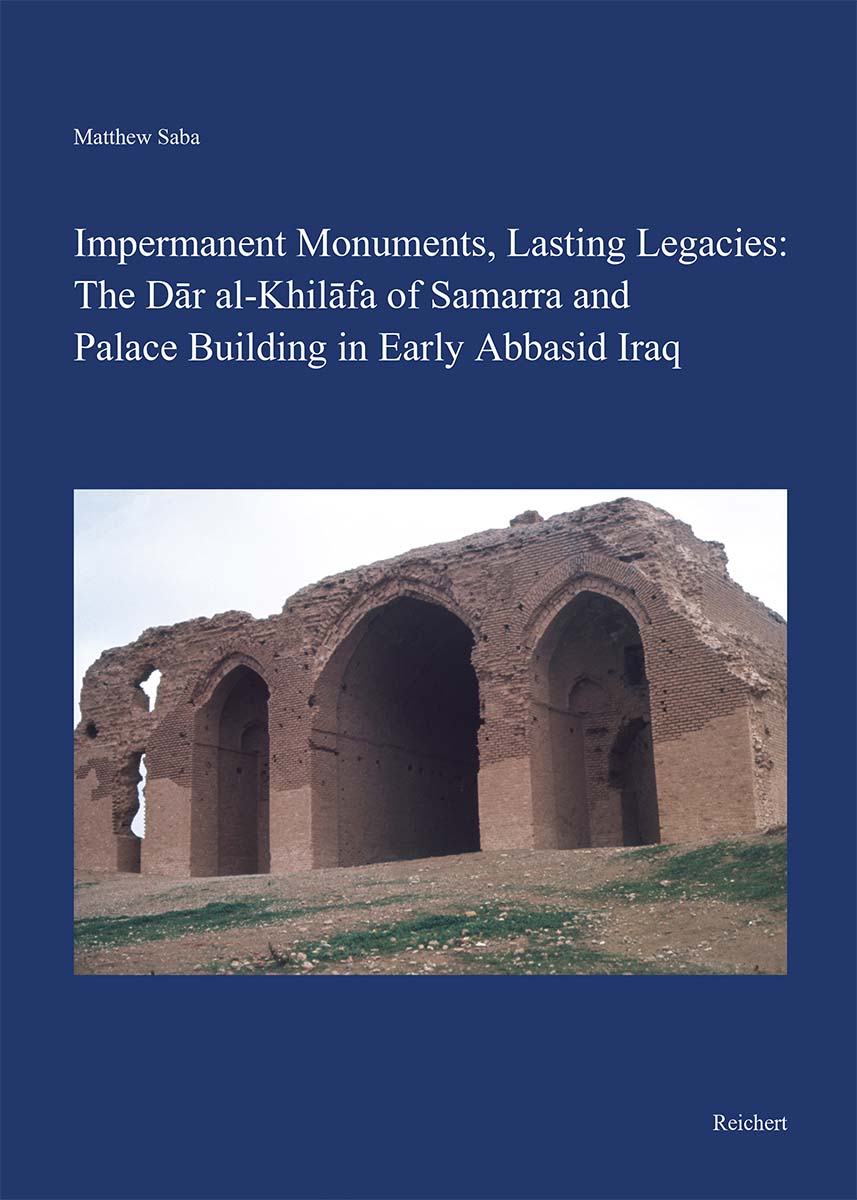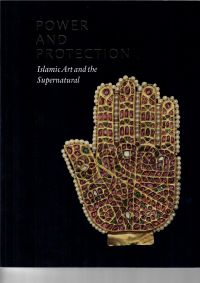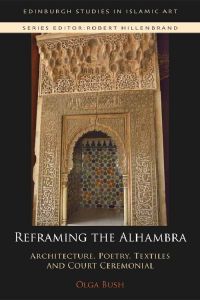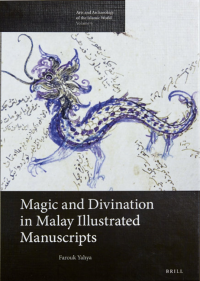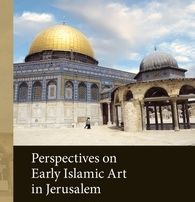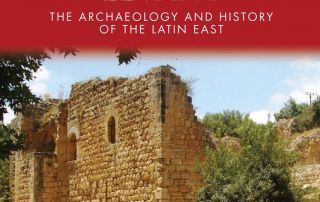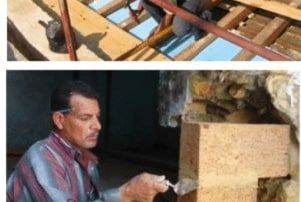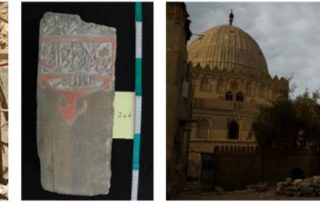Publications
A selection of reports on the publications projects we have supported and funded in the field of Islamic Art, Heritage and Culture since we were founded in 1987
Recent Publications
Impermanent Monuments, Lasting Legacies: The Dār al-Khilāfa of Samarra and Palace Building in Early Abbasid Iraq
This book offers a new interpretation of early Abbasid palaces as “impermanent monuments.” Synthesizing an array of sources, ranging from archaeological finds and classical Arabic literature to modern studies on the social and intellectual history of Islamic civilization, it reveals ways in which the Abbasid court designed, decorated, presented, and [...]
Power and Protection: Islamic Art and the Supernatural
This catalogue, Power and Protection: Islamic Art and the Supernatural deals with the entirety of the Muslim world with a total emphasis on pre-Modern Islamic cultures through the lens of visual and material culture. It contextualises the art work in three essays reflecting the thematic divisions adopted in the exhibition. [...]
Reframing the Alhambra: Architecture, Poetry, Textiles and Court Ceremonial
The Nasrid builders of the Alhambra - the best-preserved medieval Muslim palatial city - were so exacting that some of their work could not be fully explained until the invention of fractal geometry. Their design principles have been obscured, however, by the loss of all archival material. This book resolves [...]
Magic and Divination in Malay Illustrated Manuscripts
This book offers an integrated study of the texts and images of illustrated Malay manuscripts on magic and divination from private and public collections in Malaysia, the UK and Indonesia. Containing some of the rare examples of Malay painting, these manuscripts provide direct evidence for the intercultural connections between the [...]
Get Connected
To keep up to date on our projects and their impact please follow us on Facebook, Instagram and Twitter
More Publications
Magic and Divination in Malay Illustrated Manuscripts
This book offers an integrated study of the texts and images of illustrated Malay manuscripts on magic and divination from private and public collections in Malaysia, the UK and Indonesia. Containing some of the rare examples of Malay painting, these manuscripts provide direct evidence for the intercultural connections between the [...]
Perspectives on Early Islamic Art in Jerusalem
Lawrence Nees is the current H.Fletcher Brown Chair of Humanities holder at the University of Delaware. He received a grant from the Trust to help publish his book Perspectives on Early Islamic Art in Jerusalem which was released in 2016. His book is a very detailed yet also user friendly [...]
Abbasid painting of the Caliphal Palace of Samarra, Iraq
Fatma Dahmani is a Barakat Trust postdoctoral fellow. Her original project was focused solely on the Abbasid painting of the Caliphal Palace of Samarra and the extent to which it is an original piece. After having conducted further research into the broader city more things caught her eye. This included [...]
Crusader Landscapes in the Medieval Levant: The Archaeology and History of the Latin East
Crusader Landscapes in the Medieval Levant is a collection of scholarly essays addressing a number of aspects of the archaeology and history of settlement in the crusader states established in the Middle East during the twelfth and thirteenth centuries, collectively known as the Latin East, and on their influence on the [...]
The Women Who Built the Ottoman World Female : Patronage and the Architectural Legacy of Gulnus Sultan
At the beginning of the eighteenth century, the Ottoman Empire remained the grandest and most powerful of Middle Eastern empires. One hitherto overlooked aspect of the Empire's remarkable cultural legacy was the role of powerful women - often the head of the harem, or wives or mothers of sultans. These [...]
Sacred Precincts : The Religious Architecture of Non-Muslim Communities Across the Islamic World
This book examines non-Muslim religious sites, structures and spaces in the Islamic world. It reveals a vibrant portrait of life in the religious sites by illustrating how architecture responds to contextual issues and traditions. Sacred Precinctsexplores urban context; issues of identity; design; construction; transformation and the history of sacred sites and [...]
“Mamluk Patronage: An Expansion of a Traditional Concept.”
Iman R. Abdulfattah, Doctoral candidate in Islamic Art and Archaeology at the University of Bonn The grantee is well acquainted with the School of Mamluk Studies (SMS). It was created in 2014 to foster and promote a greater awareness of the Mamluk sultanate. As well as to provide junior and [...]
Contemporary Art from the Middle East
This timely book tackles ongoing questions about how 'local' perspectives on contemporary art from the Middle East are defined and how these perspectives intersect with global art discourses. Leading figures from the Middle Eastern art world, western art historians, art theorists and museum curators discuss the historical and cultural circumstances [...]
Digital Access to Persian Manuscripts
Digital preservation of illustrated Persian manuscripts, forming part of a larger Digital Persian Manuscripts project which aims to put details of 11.000 manuscrpts online together with digitised images of 50. Author : Ursula Sims Williams This digitised manuscripts are available here : https://britishlibrary.typepad.co.uk/asian-and-african/persian.html
RAB‘A OF SULTAN QAITBEY
RAB‘A OF SULTAN QAITBEY(monument # 104), Eastern Cemetery, Cairo A publication accompanying the excavation of the Mausoleum of Sultan Qaitbey in Cairo which took place from August 2016 to March 2017 by ARCHiNOS Architecture in collaboration with the Historic Cairo Project of the Ministries of Antiquities. Grantee: , Director, [...]
Cairo Cemetery Salvage Project
In 2011 the Barakat Trust gave a grant to May Al-Ibrashy a grant to help participate in the Cairo Cemetery Salvage Project (CCSP). The Mausoleum and Sabil‐Kuttab Radwan Agha al‐Razzaz Conservation Project is building 2 of the Cairo Cemetery Salvage Project (CCSP). Building 1 was the Mausoleum of Ruqayya Dudu [...]
The Art and Material Culture of Iranian Shi’ism
The official religion of Iran has been Shi'i Islam from the Safavids in the sixteenth century to the present day. Little is known about the material culture produced, especially in Iran, by the narratives and traditions surrounding Shi'ism. The Shi'i world experience has provided a rich artistic tradition encompassing painting, [...]


